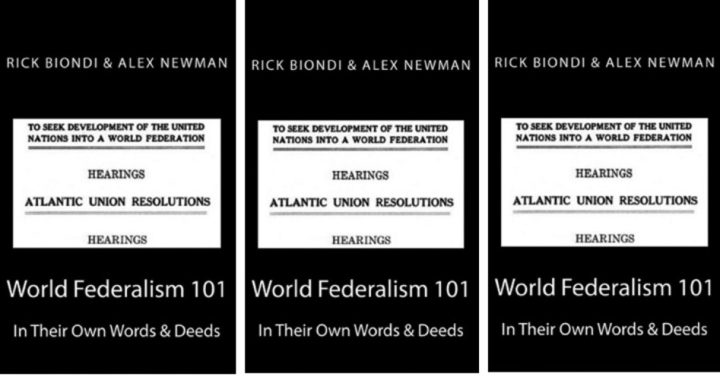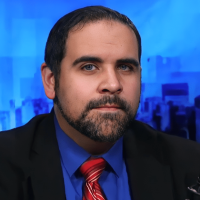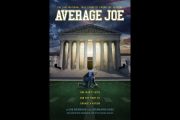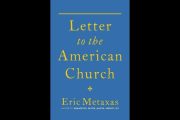
Anyone familiar with the political beliefs of Rick Biondi and Alex Newman would likely be surprised — perhaps even astonished — to discover that they’ve collaborated on a book about the Atlantic Union and global governance. Yet there their names appear, as the coauthors, on the cover of World Federalism 101.
Alex Newman is not only a foreign correspondent for The New American, a publication that, like its parent organization The John Birch Society, stands firmly against submerging the United States in supranational or world government, but Newman himself has written myriad articles warning against the plot to commit merger. On the other hand, Rick Biondi is a former executive consultant for the Association to Unite the Democracies (AUD), an organization devoted to transforming the North Atlantic Treaty Organization (NATO) into a full-fledged political union of the United States and Europe.
So why the surprising collaboration of Biondi and Newman on World Federalism 101?
Newman answers the question in the introduction, which was his principal contribution to the book. “I have my own thoughts on all of this, and so does Biondi,” Newman explains regarding the eye-opening contents of World Federalism 101. “We certainly do not agree on everything, and we disagree on plenty. I still view the United States and its founding documents and principles as key to preserving freedom, while Biondi seems to me more open to the idea of ceding some sovereignty and transnational federalism provided liberty is always respected.” However, Newman adds, neither his opinion nor Biondi’s matters so far as the book’s contents are concerned because “what is contained … is simply facts and history. What it means and how it should be addressed is up to each individual — up to you. First learn the facts, and then make up your own mind about them. Biondi’s book will help you do that.”
It certainly will. The book is comprised of a five-part chronology about the Atlantic Union and world federalist movements throughout the 20th century and into the 21st. Each part is interspersed with key documents and quotes that tell the story in the words of the global architects themselves. The quoted material is extensive, and the chronology serves basically to provide historical context for the documentation, the bulk of which is drawn from the Congressional Record. This makes the book particularly valuable as a history of the Atlantic Union and world federalist movements in the U.S. Congress, though the scope of the book is not limited to this.
Biondi, who prepared the chronology, presented the documentation matter of factly, without making his own personal views obvious to the reader. The result is that World Federalism 101 reads like an appendix, chronologically outlining the history and facts of the movements for both world and transatlantic government. Biondi’s objective writing makes the book a useful reference tool for both proponents and opponents of these movements.
Let us now survey some of the quoted material in the book. Consider, for one example, this statement supporting the concept of Atlantic Union:
It is fitting that the United States, the world’s first truly federal government, should be a main force behind the effort to find a basis for a broad federation of free Atlantic nations.
That statement was made by Richard Nixon on September 1, 1966, two years before becoming president of the United States. Although he described the federation of Atlantic nations as being “free,” it is also clear that he envisioned a transfer of political power to the Atlantic Union, based on his comparison of this confederation to the United States. Such a transfer of power, of course, would necessarily mean the loss of at least some state sovereignty to the new super-national government, a loss of sovereignty that could be expected to snowball over time. It would also mean the supplanting of the United States’ supreme law of the land — the U.S. Constitution — with the new political order.
A much earlier proponent of globalism was Theodore Roosevelt, who on May 5, 1910, the year after he left the presidency, said the following during his acceptance speech for the Nobel Prize at Christiania (Oslo, Norway):
I cannot help thinking that the Constitution of the United States, notably in the establishment of the Supreme Court and in the methods adopted for securing peace and good relations among and between the different states, offers certain valuable analogies to what should be striven for in order to secure, through the Hague courts and conferences, a species of world federation for international peace and justice. [Emphasis added.]
A month earlier, on April 5, 1910, U.S. Representative Richard Bartholdt (R-Mo.) introduced “Joint Resolution 187: To authorize the appointment of a commission to draft articles of international federation.” A key portion of Bartholdt’s resolution stated:
Second, To report to Congress, as soon as practicable, a draft of articles of federation limited to the maintenance of peace, through the establishment of international court having power to determine by decree all controversies between nations, and to enforce execution of its decrees by the arms of the federation, such arms to be provided to the federation and controlled solely by it.
Later that year, the House of Representatives and Senate unanimously passed the Commission on Universal Peace resolution, which was “a watered-down version of Joint Resolution 187,” Biondi notes.
In 1940, Dr. Robert Lee Humber, founder of the Movement for World Federation, “started a personal campaign to convince state legislatures to petition the U.S. Congress to create a one world government,” Biondi writes. World Federalism 101 goes on to note, “Between 1940 and the mid-1950s, over 24 states encouraged the exploration of a world government.” In 1949, Alan Cranston became president of the United World Federalists and “launched the ‘California Plan’ designed to ‘call a Constitutional Convention for the purpose of proposing amendments to the Constitution paving the way to U.S. participation in world government,’” Biondi writes.
The California legislature passed a resolution applying to Congress to call such a convention under Article V of the U.S. Constitution. So did the legislatures of four other states — Connecticut, Florida, New Jersey, and North Carolina. The key provision of one such application, Assembly Concurrent Resolution 17 of New Jersey, stated:
Resolved by the House of Assembly of the State of New Jersey (the senate concurring):
That application is hereby made to the Congress of United States, pursuant to article V of the Constitution of the United States, to call a convention for the sole purpose of proposing amendments to the Constitution which are appropriate to authorize the United States to negotiate with other nations, subject to later ratification, a constitution of a world federal government, open to all nations, with limited powers adequate to assure peace, or amendments to the Constitution which are appropriate to ratify any world constitution which is presented to the United States by the United Nations, by a world constitutional convention or otherwise.
The five applications did not trigger a constitutional convention since under Article V Congress shall call a convention only upon receiving applications from two-thirds of the states.
Since the creation of the United Nations in 1945, attempts have been made in Congress to grant it more power, including delegating it with the authority to “deal with disarmament and weapon control”; establishing of world inspection and police forces; transforming the UN General Assembly into a more representative “parliament of man” with legislative powers, including the power to raise revenue through the taxation of international transactions; creating a “Bill of Human Rights”; and strengthening the International Court. In addition to Cranston, other advocates of strengthening the UN included well-known names such as then-Representatives Gerald Ford (R-Mich.) and John F. Kennedy (D-Mass.).
In 1950, U.S. Senator Charles William Tobey (R-N.H.) introduced a resolution declaring “the sense of Congress that fundamental objective of the United States foreign policy should be (1) ‘to support and strengthen the United Nations’ and (2) ‘to seek its development into a world federation open to all nations with defined and limited powers.’”
If you are surprised by the candor of past proponents of Atlantic Union and world federation as illustrated by the sampling of quotes provided above, rest assured you are not alone. “I must confess that even though I considered myself well-read and knowledgeable about these efforts, this book was a real eye-opener,” Newman admitted in his introduction. “I had no idea that the effort to build a world federation had been so open and even ‘mainstream’ just a few generations ago.”
There is now less openness on the part of the one-world schemers. Yet, albeit more stealthily, the world is now (as Newman puts it) “rushing toward global tyranny at breakneck speed.” Much to his credit, Biondi has neatly and chronologically arranged many key historical documents and facts in a succinct format, accessible and friendly to readers and researchers. No bookshelf of anyone deeply committed to or staunchly opposed to the goals outlined in this book should be without it.
World Federalism 101, by Rick Biondi and Alex Newman, self-published via Create Space, 2014, 212 pages, paperback. (To order, click here.)




